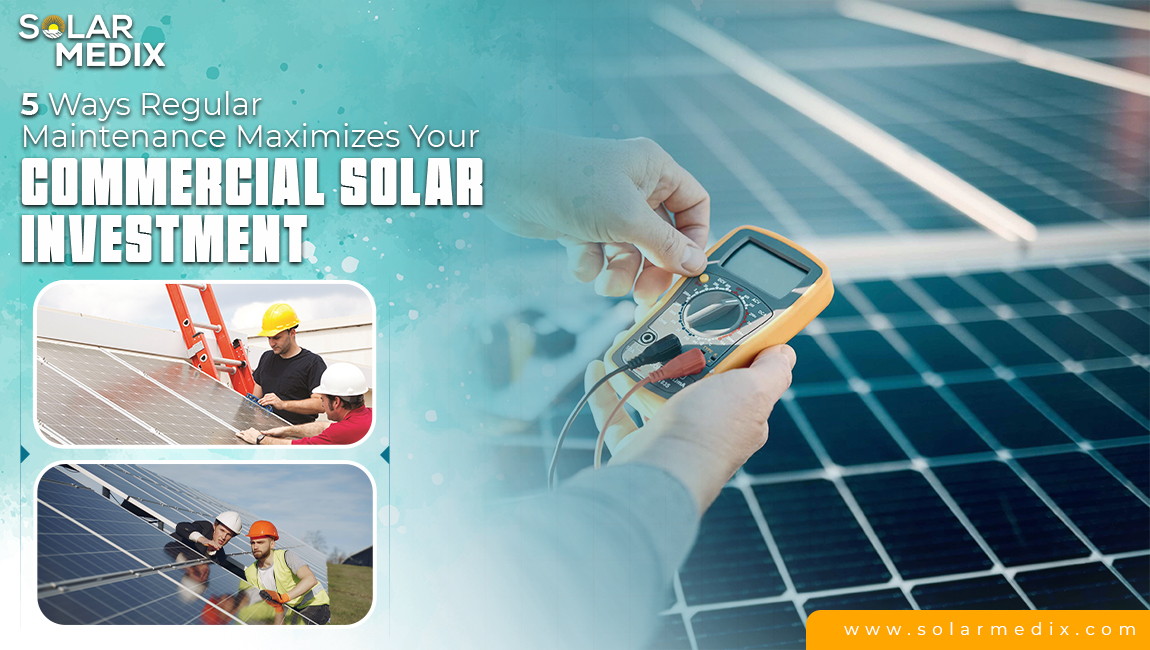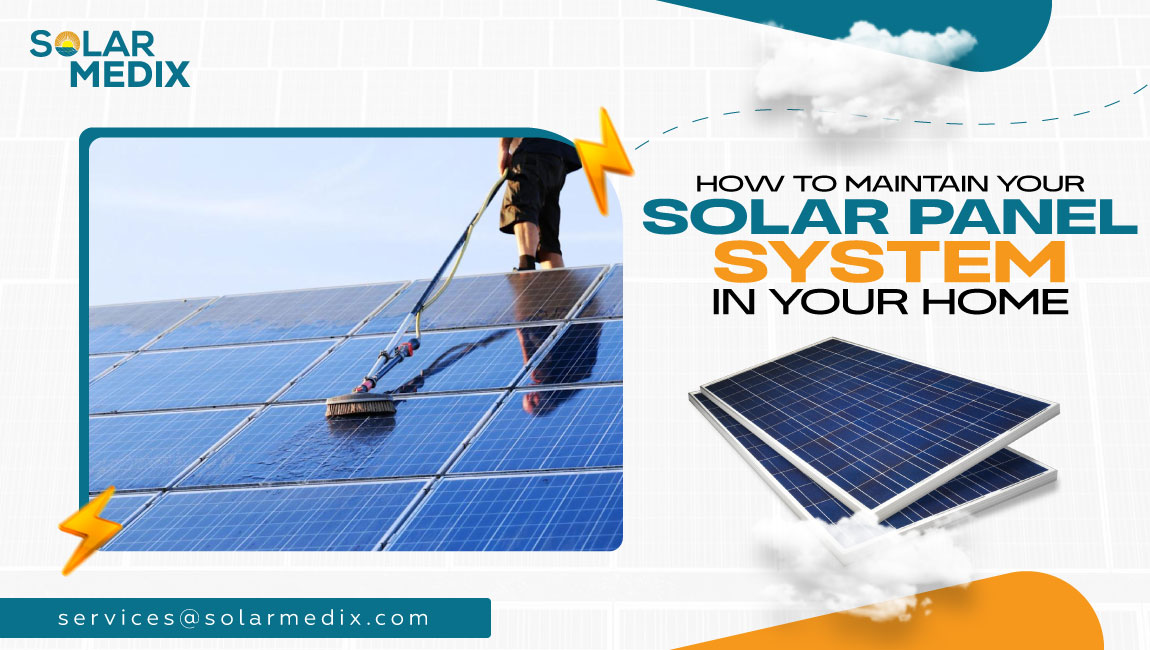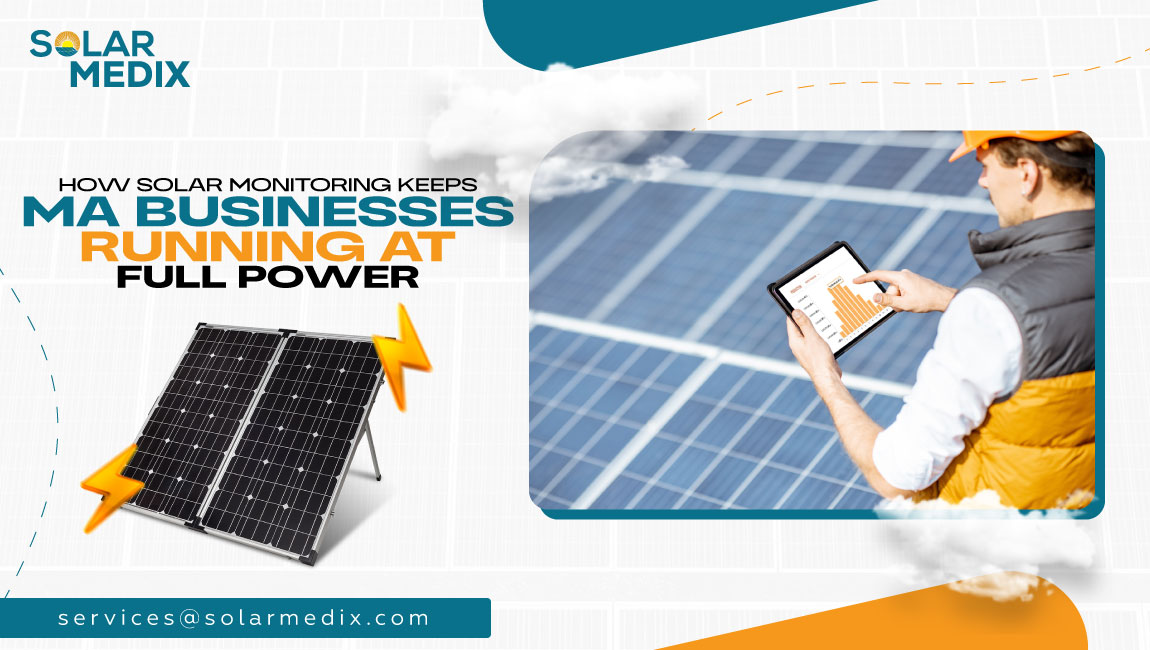Installing solar panels is a smart option for businesses. However, commercial solar systems can degrade and perform inefficiently over periods of time. It exposes businesses to higher costs than originally expected. This is where the IR inspections on the solar panels are in action.
Infrared thermography has proven to be an essential asset in the maintenance of solar panels. It uses heat imagery to detect unseen trouble spots, such as hot spots in solar panels, bad connectors or other potential problems not visible to the naked eye.
Moreover, you must know that commercial solar systems are subject to a median annual degradation rate of 0.8%, nearly double what was projected at the 0.4% rate. This means that a business’s solar system might lose up to 0.8 per cent of its efficiency each year. But there is no need to worry—professional solar IR inspections can easily prevent this loss.
Below, we will discuss why IR Inspections are so important to businesses that depend on solar power. And how IR inspections help businesses avoid unexpected solar system downtime, repairs that could save you money and make sure your system is performing at its peak.

The Secret to Long-Term Solar System Performance
The objective of business investment in solar power is obvious. They want to cut energy costs and to help reduce local air pollution. But a solar system’s performance does not remain constant forever. Solar panel health checks are also required over time to keep your system running at full capacity.
Unfortunately, a lot of businesses forget that they will need regular solar maintenance services after installation. Thinking instead that once the panels are up there, you would not have to check them for years to come.
Indeed, solar system performance can degrade with time for reasons including suboptimal solar components, physical wear and tear, and environmental circumstances.
Want to know the secret to stopping this solar degradation? It’s only possible with IR inspections. It enables companies to fix problems before they lead to major solar equipment failures.

What Are IR Inspections in Commercial Solar Systems?
IR inspections utilize infrared thermography to identify temperature differences within solar panels. This serves to pinpoint potential problems such as hot spots or damaged wiring that might impact system performance.
The system entails scanning the solar array with IR cameras to see where temperature differences are occurring. It lets identify hot cells and damaged components before they become a costly repair. It is a non-invasive, fast and quite effective part of a solar maintenance program.

Solar Issues IR Inspections Can Detect
IR inspections can detect a range of issues that impact the performance of solar panels.
Some of the most common problems include:
- Hot Cells: A hot cell refers to a solar panel cell that is operating at a higher temperature than the surrounding cells. This could be due to internal damage or poor connections. IR thermography can spot these issues, which helps in preventing solar panel failure.
- Optimizers: Solar optimizers are devices used to increase the efficiency of individual solar panels. When an optimizer malfunctions, it reduces the overall performance of the system. IR inspections help in detecting such issues by identifying temperature differences caused by faulty optimizers.
- Microinverters: Like optimizers, microinverters are responsible for converting DC power to AC power on individual solar panels. If a microinverter stops working properly, it can cause energy loss. Thermal imaging can detect malfunctioning microinverters by highlighting temperature inconsistencies in the system.
- Strings with Reverse Polarity Based on IR Heat Signatures: Reverse polarity happens when the wiring is not properly installed. It can reduce performance or cause damage in a solar energy system. IR inspections help by revealing abnormal heat signatures caused by reverse polarity, preventing future solar power troubleshooting.
- Hot Connectors – Prone to Failure: IR inspections are used to locate the faulty connectors that are potential sources of overheating and resulting failures. Dealing with this problem early on is a good way to keep your system secure and avoid any life-threatening situation.
- Module Hotspot: Solar panel hot spots can lead to irreversible damage, which can result in decreased system energy production. Infrared thermography allows technicians to identify these locations of high heat and repair them, prior to them causing a great deal of damage.
- Module J-Box: The module junction box (J-box) holds all electrical connections. When it heats up, it can shut down the entire system and cause huge business losses. IR Inspections are ideal for identifying temperature irregularities on the J-box to keep your system in operation.
Curious about how to extend your solar panels’ lifespan? Explore our latest blog, What Affects the Lifespan of Solar Panels and How to Address It, and learn how to keep your system performing at its best.

Why IR Inspections Are Crucial for Commercial Businesses
Companies invested in commercial solar panels need to make sure their systems continue to work well for the duration of their life. The advantages of IR inspections make them a must for any preventive solar maintenance plan.
- Optimize Energy Production: IR inspections are crucial for detecting inefficiencies in your solar system. It lets you identify issues like hot connections and module hotspots and resolve them easily. Solving these solar issues helps businesses produce the most power they can while decreasing their dependence on grid power and decreasing their electric bill.
- Reduce O&M Costs: Performing IR inspections and routine check-ups of the condition of solar panels can help save up to 40% on O&M. IR imaging discovers little issues before they become bigger problems, giving businesses an opportunity to fix them early on and avoid costly repairs.
- Mitigate Risk & Liability: Early detection of problems via analysis of solar system performance is useful in reducing the risk of system failure, which can potentially result in major liabilities for businesses. IR inspections offer a record and proof of system health that can prove valuable if disputes or claims arise involving system performance.
- Protect Warranty Validity: Most solar systems are packaged with warranties that insist on regular solar maintenance to be honored. With routine infrared thermography inspections, you can keep the system performing well within warranty guidelines and protect your investment.
- Extend System Lifespan: Businesses that perform solar maintenance programs that include IR inspections increase the longevity of their solar energy system. This allows your system to last for a long time by identifying and solving problems before they become catastrophic.
Check out our latest blog, Solar O&M Services: Keeping Your System Running Smoothly, to learn how our services can help.

How Solar Medix Performs IR Inspections for Businesses
Solar Medix IR inspections are a valuable tool for businesses that need to ensure the efficient operation of their solar systems and reduce the risk of expensive downtime.
The following explains how we conduct business infrared thermography inspections:
- Step 1: Site Evaluation: We do a comprehensive site survey prior to conducting the solar panel inspections. This will allow us to get a feel of how the system is structured and laid out. That includes evaluating environmental factors, such as shading, panel orientation, and reviewing past inspection reports to determine if there are any problems or other causes for concern.
- Step 2: Infrared Scan: Once the evaluation is complete, we proceed with the infrared scan. We scan every component of the solar system via thermal imaging cameras. This enables us to identify thermal anomalies such as hot spots on solar panels, malfunctioning solar elements, and other problems that could compromise the functionality of the system.
- Step 3: Report Generation: We then provide our clients with a detailed report once the scan is done. Thermal images of the checked places will be attached in the report, indicating if there are any concerns. It also provides a systematic overview of the system’s general performance.
- Step 4: Findings Review: When the report is complete, we meet with our clients to discuss our findings. We discuss the outcomes, highlight problems, and analyze the effect on system efficiency.
- Step 5: Maintenance or Repair (If Needed): If any issues are detected during the inspection, we don’t stop at just identifying the problem. Our experts will guide you on what to do for maintenance or repair. In lots of cases, minor repairs can stop bigger and more expensive problems from arising. We offer the repairs ourselves or work with other experts to have your system operating at its best.
Read our latest blog, Get Expert Solar Maintenance Services with Solar Medix, to learn more about how we can help you.

Real Business Outcomes from Solar IR Inspections
IR inspections have proven to be a game-changer for businesses across various industries.
Here are four real-world case studies that demonstrate the positive impact of IR inspections on solar system efficiency and overall performance:
- West Point Military Academy (New York) – 2022
- Elnik Systems (New Jersey)
- 181 MWDC Solar Farm (Texas) – 2023
- Luminace (Massachusetts)
1. West Point Military Academy (New York) – 2022
West Point Military Academy used drone-based thermal imaging in 2022 for infrared inspections of solar panels. This allowed for efficient detection of thermal anomalies, optimizing panel performance and reducing manual inspection costs.
2. Elnik Systems (New Jersey)
Elnik Systems installed a 101.64 kW solar array and saved $510,000 over 25 years through proper maintenance. Their ongoing maintenance, including IR and thermal inspections, ensured optimal performance and energy savings.
3. 181 MWDC Solar Farm (Texas) – 2023
A 181 MWDC solar farm used DJI’s drone-in-a-box system for thermal inspections in 2023. The technology detected thermal anomalies, ensuring efficient operation and early problem identification. This case highlights how solar power optimization can be achieved through advanced infrared thermography tools.
4. Luminace (Massachusetts)
Luminace adopted AI-driven thermal anomaly detection, speeding up issue identification by 99%, ensuring faster repairs, optimizing energy production, and reducing maintenance costs.

Ready to Prevent Costly Downtime? Book an IR Inspection from Solar Medix!
Don’t wait until your solar system breaks down! Infrared inspections are an investment in avoiding downtime and ensuring your system performs to its optimum level. Finding problems early can prevent costly repairs, keep your system running more efficiently, and save you money on energy costs in the long run.
At Solar Medix, we concentrate on solar maintenance designed to optimize the efficiency and lifespan of your solar panels. Our specialists deploy the most advanced thermal imaging system and software tools for comprehensive analysis of your solar system’s performance.
Ready to schedule your solar panel inspection with us? For a professional consultation, contact Solar Medix now. Our staff will provide you with assistance and support on what you should do to get the best out of your solar system.
Don’t let solar equipment failure detection catch you off guard. Book your infrared thermography inspection now and keep your solar panels performing at their best!
FAQs
An IR test for a solar panel utilizes infrared thermography to find out the heat variations on the panels. It can also pinpoint hot spots or problems, such as bad connections, that may slow performance.
IR is short for infrared, which is the type of technology used for thermal imaging. It aids in the detection of temperature differences in solar panels, an indication of potential problems.
You should check your solar panels at least once a year. Frequent checks can catch problems early and help to keep the system working properly.













